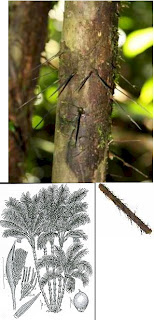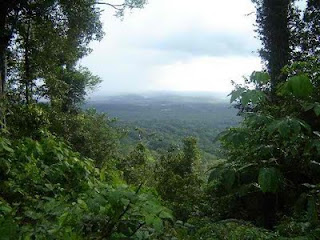 |
| Clockwise from top left: Devil's Island cells; inmates of Devil's Island; another view of the cells; Devil's Island from the air; the three Isles du Salut, off the coast of French Guiana [i.e., Devil's Island is one of the three Isles du Salut]; a book on Captain Dreyfus, one of the more "celebrated" Devil's Island inmates; the movie poster for "Papillon" from the book by Henri Charriere (1906-1973). I read Charriere's book when I was 16, back in 1971, at the recommendation of our neighbor (a close friend of my father's youngest sister). It made a robust impression on me. It is not a book for the squeamish, or the faint of heart. And because I liked it so much, he gave me "Portnoy's Complaint" to carry on. |

From page 376 of the book: “Who are you?” Revenant stood close to him, taking in the dark skin, the black tousled hair, unshaven face, and broken teeth. His clothes were made of a hearty fabric from a foreign mill. His bare feet revealed the infestation of sand fleas having burrowed into his toenails.
“My name’s Emmanuel.”
“And what are you doing here?”
“I’m from the Isles du Salut.”
“Yes, I thought I could smell the prison steps on you,” Revenant stared.
Emmanuel smiled. “You’ve found my dinner I see.”
“I found a young girl named Oyami. Did you kill her?”
The man from Devil’s Island looked up into Revenant’s eyes and nodded.





















































